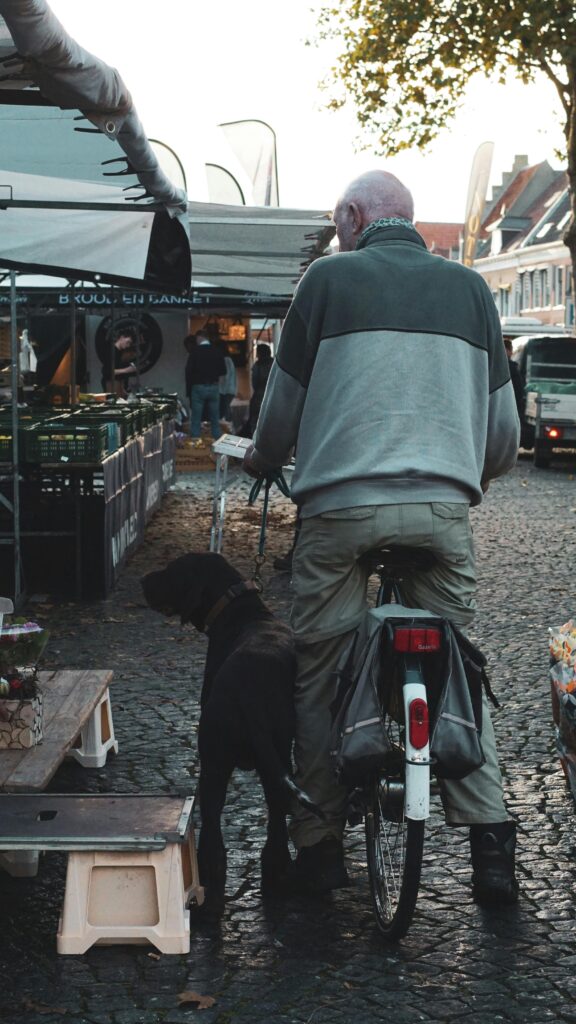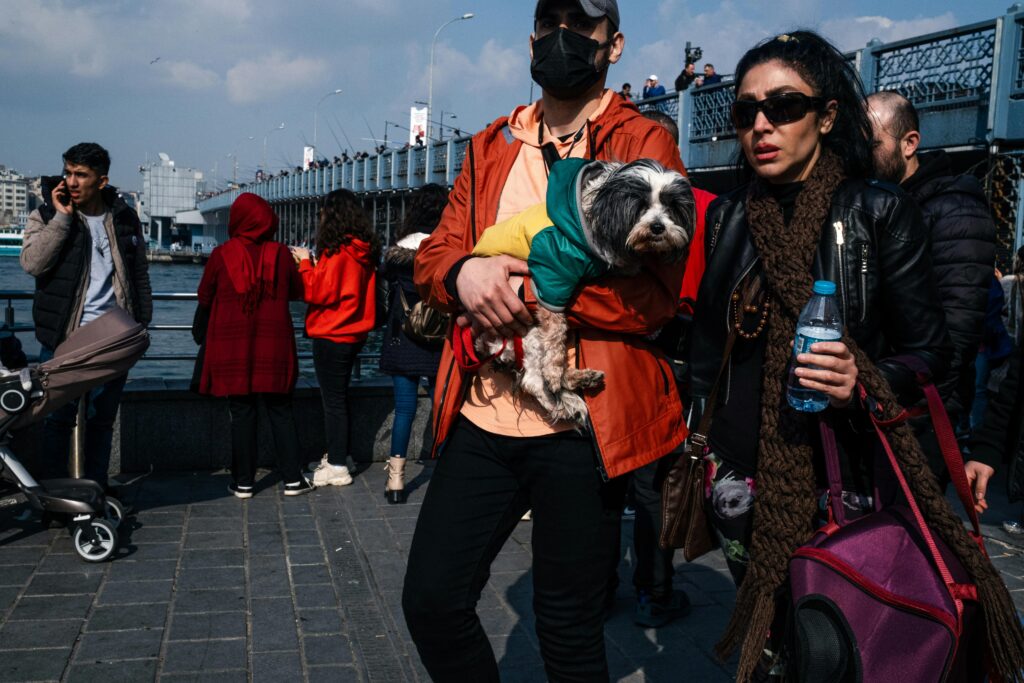Dog owners often hear how important socialization is, but it’s rarely explained in terms of the real world. Socialization isn’t just about puppy playdates or dog parks. It’s about helping your dog stay calm, confident, and obedient in the same spaces you live your daily life: crowded sidewalks, outdoor cafes, family events, and local parks.
In a bustling city like Chicago, your dog is exposed to constant sights, sounds, and smells. Real-world socialization is how you prepare them to handle it all without fear or reactivity. Whether your pup is still learning or you’ve got an older dog needing some polish, this guide will help you build reliable behavior in any environment.

What Is Real-World Socialization?
Socialization means teaching your dog how to behave calmly and appropriately in new environments and around unfamiliar people, dogs, and objects. Real-world socialization takes that concept and applies it directly to everyday life.
Examples include:
- Sitting quietly under your chair at a busy outdoor café
- Ignoring other dogs on the sidewalk
- Walking through a park without pulling or lunging
- Remaining focused at a family BBQ
It’s not about having your dog “play” with every dog they meet. It’s about composure and confidence regardless of distractions.
Start With Familiar Environments
Before heading into crowded areas, your dog should be able to follow basic commands at home and in your yard. Start by reinforcing:
- Sit and down commands with duration
- Loose leash walking
- Place command for calmness
- Recall (coming when called)
If your dog can’t stay calm in low-distraction environments, they’ll struggle when things get busier. That’s why we recommend starting simple and gradually increasing exposure. This concept is especially valuable in our Basic & Advanced Obedience Program, which focuses on reliability in real-world scenarios.
Gradually Increase Distractions
Once your dog is confident at home, introduce moderate environments like:
- Quiet park paths during off-peak hours
- Pet-friendly retail stores
- Parking lots or sidewalks with minimal foot traffic
Reward calm behavior and use food or praise to reinforce obedience near new distractions. If your dog becomes overwhelmed, take a few steps back and reduce intensity. The key is to build positive associations without flooding their senses.
Practice at Dog-Friendly Cafes and Breweries
Chicago is full of dog-friendly patios and cafes. These can be great training grounds, but only if your dog is ready.
Start by:
- Visiting during off-hours
- Bringing a mat or towel to define their “place”
- Rewarding calm behavior under the table
- Ignoring friendly passersby until your dog maintains focus
If your dog has trouble staying composed, consider working on the place command with distractions like kids, dogs, and BBQs. This is a critical part of helping your dog stay grounded in chaotic settings.
Master Walks in Urban Areas
A walk through downtown or a crowded park like Grant Park can feel overwhelming to an untrained dog. There’s noise, foot traffic, food carts, other dogs, skateboards, and more.
To improve your walk:
- Use a structured heel instead of allowing free-roaming sniff walks
- Avoid retractable leashes that allow too much freedom
- Bring high-value treats to mark calm behavior when passing triggers
- Practice “look” or “focus” commands when your dog becomes distracted
Loose leash walking is a must in real-world socialization. Without it, your dog may become overstimulated or reactive when you least expect it.
Don’t Let Dog Parks Be Your Only Outlet
Dog parks may offer playtime, but they don’t always teach manners. In fact, poorly supervised dog parks can lead to bad habits like excessive barking, bullying, or overexcitement.
Instead, look for dog-friendly spaces that reinforce structure, such as:
- Outdoor fitness areas with walking trails
- Farmer’s markets with calm exposure
- Retail stores like Home Depot, Michaels, or Nordstrom (many are dog-friendly)
The AKC has a full guide on puppy training classes and socialization goals, which reinforces why controlled environments are more effective than chaotic free-for-alls.
Socialization Is Ongoing, Not One and Done
Many owners think socialization ends after puppyhood. In reality, it’s an ongoing process. Dogs that aren’t continually exposed to new things can become fearful or reactive over time.
Make socialization part of your routine by:
- Visiting new parks or neighborhoods
- Sitting outside coffee shops with your dog
- Attending local dog-friendly events
- Practicing obedience in different locations weekly
Consistency builds confidence. The more your dog sees, the more adaptable they become.
Know When to Get Help
If your dog:
- Lunges at other dogs or people
- Shuts down in new environments
- Struggles to follow commands outside the home
- Shows signs of fear, anxiety, or overstimulation
Then it’s time to work with a professional trainer. The earlier you address these challenges, the easier they are to fix.
Our team at Off Leash K9 Training Chicago specializes in real-world obedience. We teach dogs how to stay focused, calm, and controlled no matter where you go.
Final Thoughts
Socializing your dog in the real world takes more than just good intentions. It requires structure, consistency, and thoughtful exposure. Whether you’re enjoying brunch on a patio, walking through Navy Pier, or exploring your local farmers market, your dog should feel confident and focused by your side.
With the right plan, you can take your dog anywhere with pride. And if you need support, we’re here to guide you every step of the way.
Ready to build real-world obedience and confidence with your dog?
Contact our Chicago team today and start training for life beyond the backyard.

